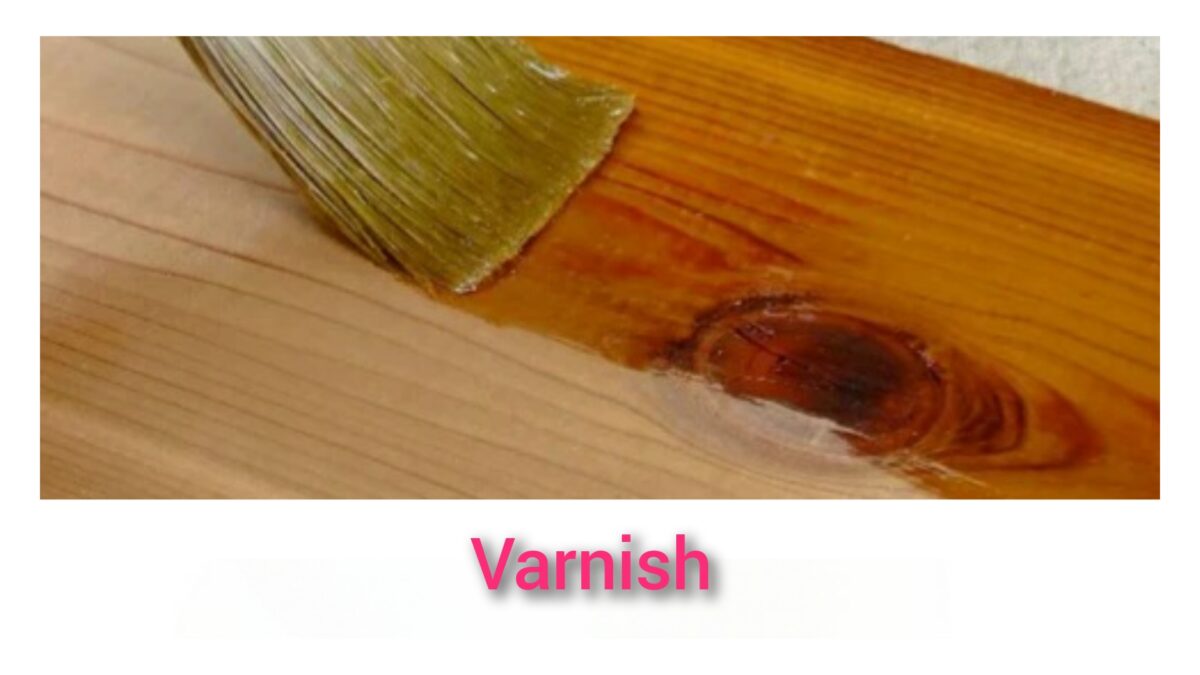Table of Contents
Varnish Definition
Varnish is the solution of resins or resinous substances, such as amber, copal, shellac, and gum resin, in solvents like oil, turpentine, and alcohol.
Description
Varnish is a popular coating solution used to protect and enhance wood surfaces including doors, windows, floors and furniture. It forms a transparent, hard and protective film that can add shine and durability to painted surfaces. Most varnishes are made from a combination of resin, driers, and solvents, and the process of applying the varnish to a surface is called varnishing.

One of the major benefits of varnish is that it provides protection against harmful atmospheric effects, such as moisture and UV radiation, which can damage wood surfaces. Varnish can increase the durability of a paint coating, making it more resistant to wear and tear over time.
Another advantage of varnish is that it can enhance the natural beauty of wood surfaces without hiding the natural grain of the wood. It can make wood surfaces more aesthetically pleasing while providing long-lasting protection.
Properties Of Varnish
- The finish should be shiny.
- The finish should be long-lasting.
- The finish should dry quickly after application.
- The finish should not develop cracks after drying.
- This type of finish is often used on wood surfaces
Types Of Varnishes
- Oil varnish
- Turpentile varnish
- Spirit varnish
- Water varnish
We will discuss these 4 types of varnishes.
1. Oil Varnish
Oil varnish is a type of coating made by dissolving an oil, such as linseed oil, in a solvent, such as turpentine or mineral spirits, and then adding a resin, such as dammar or copal, to the mixture. The resulting solution is then applied to a surface, such as wood or metal, and allowed to dry to form a hard, protective film.
Oil varnish is commonly used as a finish for woodwork, such as furniture, flooring and cabinetry, as well as for musical instruments such as violins and guitars. It provides a durable and attractive finish that enhances the natural beauty of the wood while protecting it from moisture, abrasion and other damages.
Oil varnish is also valued for its aging ability, developing a rich, lustrous patina over time as it reacts with the wood and other elements in its environment. This is a traditional finishing technique that has been used for centuries, and is still widely used in traditional and contemporary woodworking industry.
2. Turpentile varnish
Turpentile varnish is a type of varnish that is made by dissolving natural resins, such as dammar, copal, or mastic, in a solvent such as turpentine or mineral spirits.
The resulting solution can then be applied to a surface, where it dries to form a hard, protective coating. Depending on the type of resin used, turpentine varnish can provide either a glossy or matte finish.
It is known for its durability and resistance to heat and chemicals. However, due to its high cost and relatively low availability, turpentine varnish has largely been replaced by synthetic varnishes.
3. Spirit varnish
Spirit Varnish is a protective coating that has been utilized for centuries in woodworking, furniture making, and antiques restoration. It is created by dissolving natural waste like oil shale or asphalt in a solvent such as ethanol or methanol. The resulting solution can be applied to surfaces to create a durable and decorative product that can withstand wear and tear. Spirit varnish is transparent and enhances the natural beauty of wood and other materials.
One of the benefits of using spirit varnish is that it dries quickly and can be reused in no time. This makes it a popular choice for woodworking projects requiring multiple coats of varnish. Additionally, spirit varnish adheres well to various surfaces including wood, metal, and glass.
Users must exercise caution when working with spirit varnishes since they are highly flammable and the solvent used in them can be dangerous if ingested in significant quantities. Proper ventilation is necessary to prevent health hazards while working with spirit varnishes.
4. Water varnish
Water varnish is a type of varnish that uses water as its primary solvent. Unlike traditional oil-based varnishes which are based on petroleum solvents, water-based varnishes are formulated to use water as the primary carrier for the resin and other additives.
Water varnish is becoming increasingly popular for finishing woodwork and other surfaces due to their low volatile organic compound (VOC) content, quick drying time, and easy cleanup. Provides a long-lasting, clear finish that is less prone to yellowing, cracking, and peeling than oil-based varnishes. Water-based varnish is ideal for interior applications, including flooring, cabinetry, furniture, and trim work.
Water varnish have several advantages over oil-based varnishes. For example, it has low odor, dries quickly, and enables faster production times. It is also easier to clean, as it can be diluted and cleaned with water rather than solvents. Water-based varnishes are environmentally friendly and have a minimal environmental impact, making them a more environmentally friendly alternative to traditional varnishes.
Uses Of Varnish
Varnish is used to coat the outer surface of various objects like table, chair etc. It is commonly used in woodworking industries for applying to wooden surfaces. This enhances the durability and aesthetics of the wood.
